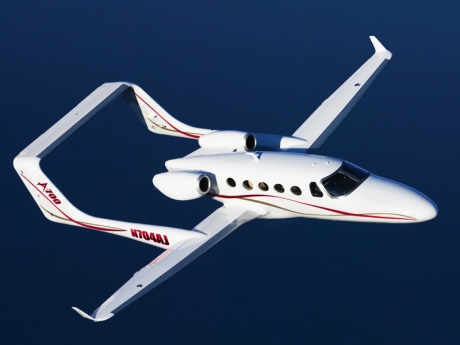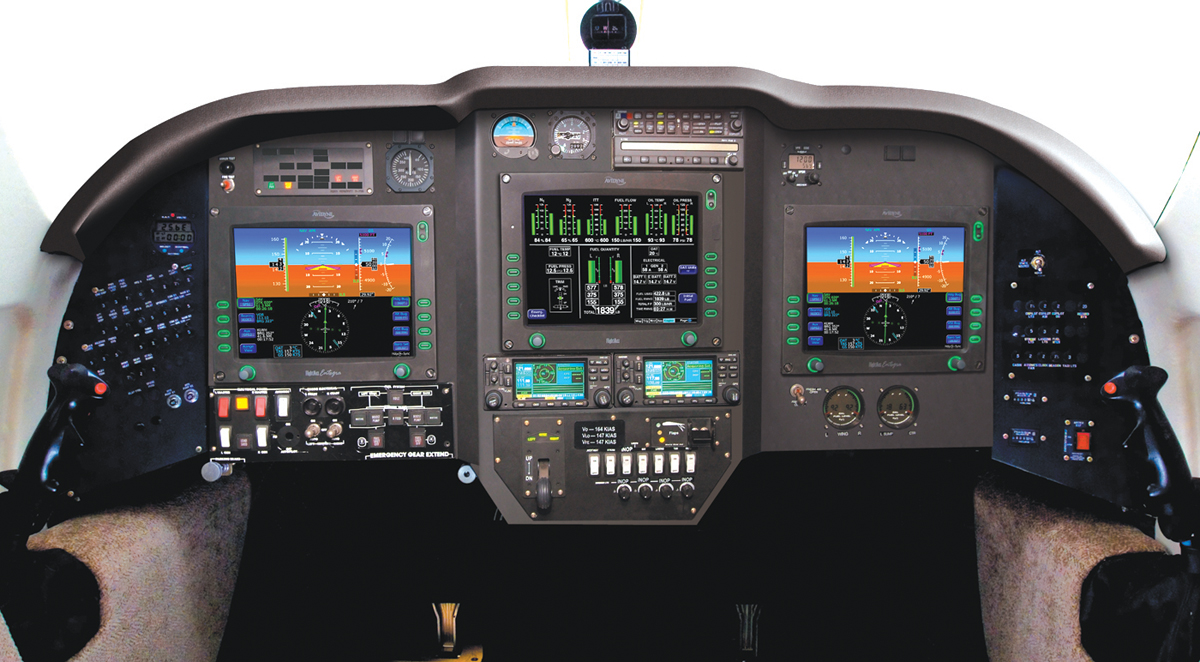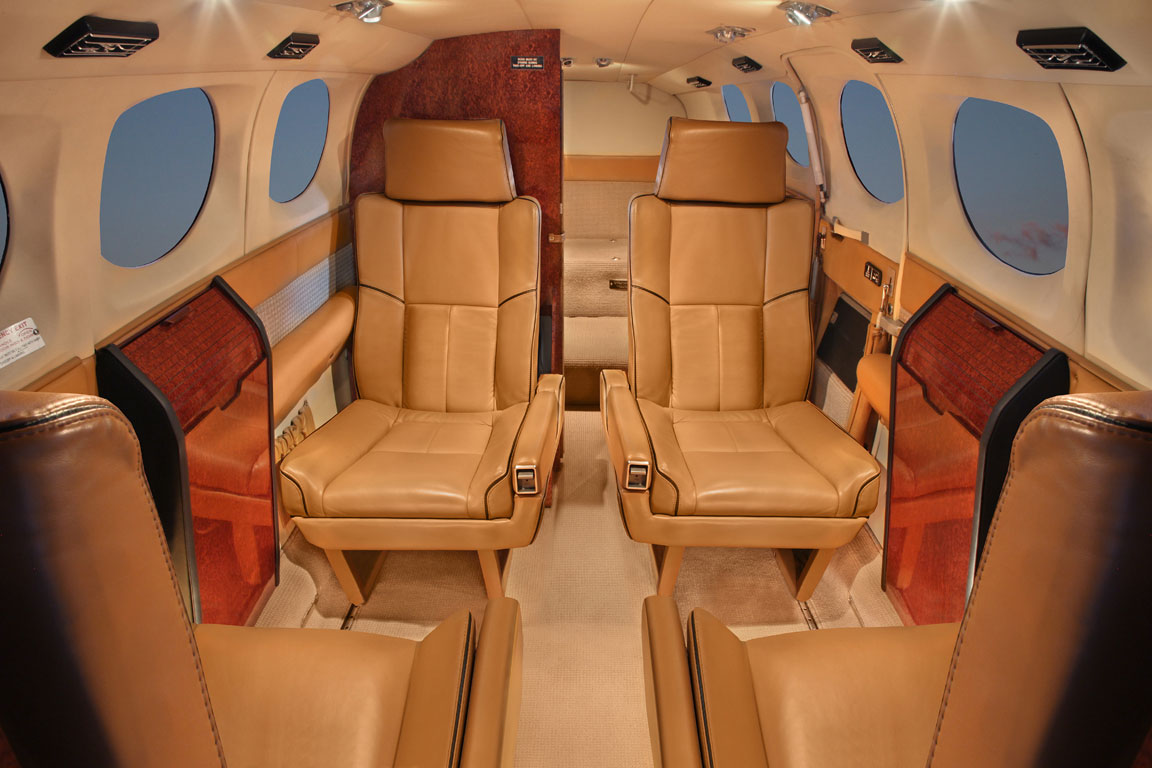


Aircraft Description
Background/History
Adam Aircraft was a designer and manufacturer of advanced aircraft for civil and government markets. The company used computer-aided design, rapid prototyping, advanced manufacturing techniques, and carbon composite materials to produce high-performance aircraft. The A500 twin-engine piston aircraft was Type Certified by the FAA, however due to the economic crisis Adam Aircraft ran into financial problems and filed for bankruptcy liquidation. AAI Acquisition was formed to buy the assests of Adam Aircraft, but after an aborted effort to restart the certification process, was forced to shutdown the operation and offered composite services to other companies but, went unfulfilled and all operations halted in mid 2009..
Power
The A700 featured two highly efficient turbofan engines that were provided by Williams International. The FJ-33-4 engines are each rated at 1,350 pounds of static thrust and were pylon mounted on the fuselage. Inspection interval on the engines was 3,500 hours. With FADEC.
Avionics
The A700A avionics suite included a state-of-the-art glass cockpit that provided Primary Flight Display (PFD) capability for the pilot. The PFD displayed all attitude, heading, airspeed, altitude, and vertical speed data as well as flight director command bars, heading, and altitude reselects. In addition, The Multifunction display (MFD) capability provided all navigational information along with engine instrumentation. A solid-state Altitude Heading reference System (AHRS) and an Air Data Computer (ADC) provided altitude and air data information, while a three-axis digital autopilot, yaw dampener, and flight management system functionality also was included.
Design Features
The A700 was a small-sized medium-ranged, business aircraft. As with the earlier-designed A500 piston-engine model, the A700 featured a straight tapered wing, a central fuselage, and twin wing-mounted booms which support aft twin rudders linked by a high horizontal stabilizer. The A700’s two turbojet engines were mounted on the sides of the fuselage. The aircraft utilized a retractable, trailing link landing gear. Each landing gear assembly was a single-tire design. The trailing link main landing gears retracted into the tail booms while the nose gear retracted into the nose of the fuselage. The fuselage was constructed of carbon fiber composite materials with the monocoque consisting of honeycomb-stiffened skins. Forward and aft pressure bulkheads completed the pressure vessel.
Accomodations
The A700 cabin featured 245 cubic feet of space with up to seven seats in a club or seats-forward configuration. An innovative aft lavatory was available providing a seventh belted seat. In-cabin storage was located just aft of the crew seats and outside the lavatory compartment. Dedicated baggage space was located in the 25 cubic foot nose compartment.
| General | A700 | |||
|---|---|---|---|---|
| Category | Jet < 20,000 lbs. | |||
| Years Aircraft Manufactured | 2007 | |||
| Serial Number Range | N/A | |||
| Retail High Price | N/A | |||
| Retail Low Price | N/A | |||
| Characteristics | A700 | |||
| Seating | 1+6/7 | |||
| Wing Loading | 41.2 | |||
| Power Loading | 3.0 | |||
| Noise(EPNdB): Takeoff/Sideline/Approach | N/A | |||
| External Dimensions (ft) | A700 | |||
| External Length | 40.9 | |||
| External Height | 9.6 | |||
| External Span | 44.0 | |||
| Internal Dimensions (ft) | A700 | |||
| Internal Length (Overall/Net Height) | 11.9/9.0 | |||
| Internal Height | 4.2 | |||
| Internal Width (Max/Floor) | 4.5/NA | |||
| Baggage | A700 | |||
| External: Cu.Ft./Lb. | N/A | |||
| External: Cu.Ft./Lb. | 30/NA | |||
| Power | A700 | |||
| Engines | 2 Wms Intl FJ33-4A | |||
| Output (lbs ea.)/Flat Rating | 1200/ISA+7C | |||
| Inspection Interval | 3500t | |||
| Data based on latest manufactured year | ||||



